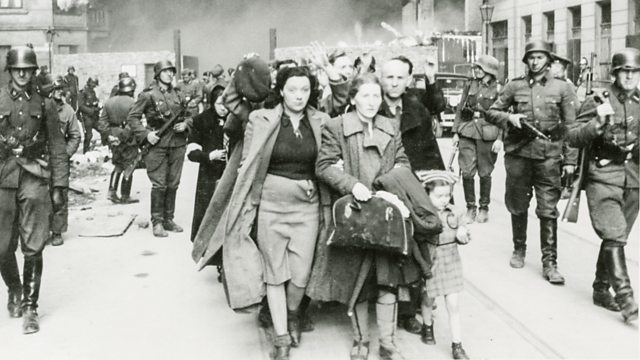The US and the Holocaust episode 3 – The Homeless, Tempest-Tossed: First reports of the industrial scale of killing reach the United States. A group of dedicated government officials establish the War Refugee Board to finance and support rescue operations. As the Allies advance, soldiers uncover mass graves and liberate German concentration camps, revealing the full horror of the Holocaust. The danger of its reverberations soon become apparent.
Discover the gripping and powerful new three-part series, “The U.S. and the Holocaust,” directed and produced by Ken Burns, Lynn Novick, and Sarah Botstein. The six-hour documentary takes an in-depth look at America’s response to one of the greatest humanitarian crises of the 20th century. Inspired by the United States Holocaust Memorial Museum’s “Americans and the Holocaust” exhibition and using its historical resources, the series examines the rise of Hitler and Nazism in Germany, including global antisemitism, racism, the eugenics movement in the United States, and race laws in the American South.
Written by Geoffrey Ward, the series combines first-person accounts of Holocaust witnesses and survivors with interviews from leading historians and writers. Through this powerful combination, “The U.S. and the Holocaust” dispels competing myths that Americans were either ignorant of the unspeakable persecution faced by Jews and other targeted minorities in Europe, or looked on with callous indifference. The film addresses many questions that remain relevant to our society today, including how racism affects policies on immigration and refugees, and how governments and individuals respond to the rise of authoritarian states that manipulate history and facts to consolidate power.
The US and the Holocaust episode 3 – The Homeless, Tempest-Tossed
German concentration camps were a tragic and horrific reality during World War II. Initially established as detention centers for political prisoners, these camps eventually evolved into places of systematic and brutal persecution, torture, and death for Jews and other targeted minority groups.
To begin with, the camps were organized in a hierarchy of brutality, with the worst being the extermination camps designed for the sole purpose of killing people. The largest and most notorious of these was Auschwitz, which claimed the lives of over a million people, mainly Jews, in its gas chambers. In contrast, other camps, such as Buchenwald and Dachau, were primarily for forced labor and medical experimentation, but still involved cruel and inhumane treatment of prisoners.
Moreover, the conditions in the camps were inhumane and often unsanitary, with prisoners subjected to malnutrition, overcrowding, and disease. They were also subjected to daily beatings and torture by the guards, who were often sadistic and enjoyed inflicting pain on the prisoners. The German concentration camps were a dark chapter in human history, serving as a reminder of the extreme cruelty and horror that can be inflicted on innocent people. It is important to remember and honor the victims, to learn from the past, and to work towards a future where such atrocities never happen again.
US and the Holocaust
The Holocaust, which took place during World War II and resulted in the genocide of approximately six million Jews and millions of other minorities, is considered one of the darkest chapters in human history. The United States played a complex role in this tragedy, both in terms of its actions and its inaction.
In the early years of the war, the US was hesitant to get involved in the conflict and adopted a policy of isolationism. While many Americans were sympathetic to the plight of European Jews and other minorities, there was also significant anti-Semitism in the US, and some politicians and leaders actively opposed accepting Jewish refugees. Despite this, some Americans took action to try to help those affected by the Holocaust. For example, the War Refugee Board was established in 1944 to aid Jews and other minorities in Europe. Additionally, some individual Americans, such as Varian Fry and Raoul Wallenberg, risked their own lives to rescue Jews and other persecuted people.
However, many argue that the US could have done more to help those affected by the Holocaust. For example, the US government was slow to respond to evidence of the atrocities being committed, and refused to bomb concentration camps or take other direct action to intervene. Today, the US is home to the largest Jewish community in the world, and there are ongoing efforts to remember and learn from the lessons of the Holocaust. However, the complex legacy of the US’s response to the Holocaust continues to be a topic of debate and discussion.




